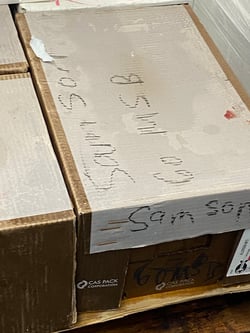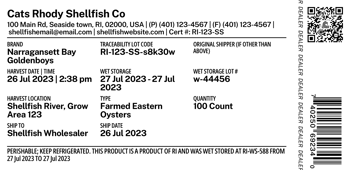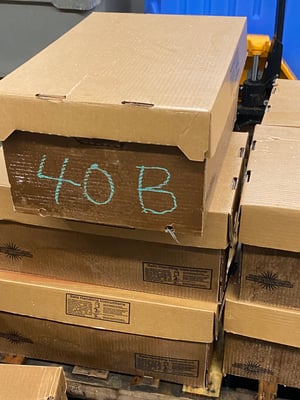The article from the New Yorker is devastating: A huge Chinese fleet, manned with at least some slave labor destroying the global squid fisheries to put calamari on the plate of US consumers.
In a deeply researched article, the authors follow calamari harvested illegally off the the coast of the Galapagos, where at least one crewman died, back to China and then on to "at least 62 American Importers" who sold on to Costco, Kroger, Safeway and others.
Obviously every industry has bad actors and not every bad act can be stopped. But the industry needs to move to a new system that prioritizes understanding the chain of custody from boat to plate. There are a lot of government, NGO and commercial efforts to address this challenge. But fundamentally, the handwritten paperwork driven by well intentioned regulations is letting bad things happen--while killing productivity.
A digital first system could help expose challenges a lot earlier and make this type of fraud much harder. To use a couple of example:
1) The Seafood Import Monitoring Program is a really well intentioned program, but the reality of just uploading documents to a government database is not helping weed out IUUs. And as of this date, squid is not covered by the program.
2) The MSC/BAP/ASC certification programs all rely on in-person monitors who show up once or twice a year. And even if we think those are effective, certification programs cover less than 40% of the worlds fisheries.
3) The complexity is huge: 80%+ of US seafood is imported. Seafood is the most traded protein in the world (3x beef). The number of products is massive (we often see 1,500+ SKUs at a mid-sized distributor).
So what are the solutions? Having worked with 100s of seafood operations, I would propose a few things.
1) Mandate digital data in near real time: Structured data like (time/location of harvest, fishing vessel, size of catch, species caught) that is then passed through the supply chain lets us find bad actors more easily. For instance, if a ship reports landing 10,000lbs, but buyers report buying 100,000lbs that should trigger a follow up.
2) Align FDA's Food Safety Modernization Act (FSMA) and the Seafood Import Monitoring Program (SIMP) so they capture the same data in the same format. Making it easier on all the participants. This includes applying a Traceability Lot Code from the beginning of the chain--even on imported products.
3) Mandate Labels with Key Information:  The labeling of seafood with crayons on wet wax boxes makes it way too easy for bad actors. Some variation of shellfish tags would be a good start.
The labeling of seafood with crayons on wet wax boxes makes it way too easy for bad actors. Some variation of shellfish tags would be a good start.

4) Lean into DNA/RNA testing: Modern tests can tell the location of a catch--if there is a good underlying database to match to. Sample testing key lots to see if the DNA matched the digital record would be highly effective in rooting out bad actors.
5) Keep it Simple and Inexpensive: Make it easy for folks to comply.  This should not be a mandate that costs the entire chain. Paired with a simple system, should be a reduction of other regulatory paperwork that maybe isn't as important.
This should not be a mandate that costs the entire chain. Paired with a simple system, should be a reduction of other regulatory paperwork that maybe isn't as important.
Government, NGOs and the industry all have roles to play, but we should agree that we want to cover 100% of seafood with an easy to use system that gets everyone on the same page. Stories like that above hurt the entire industry--even though the vast majority is doing the right thing.


